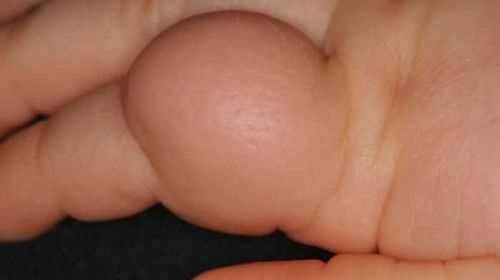Impetigo contagiosa means contagious rash in German and is a common infectious disease of the skin. You can read everything about causes, infection, symptoms and therapy here.
Impetigo contagiosa is a very contagious, bacterial skin disease that mainly affects children. The disease is assigned to the group of pyoderma, which includes all burning and purulent-inflammatory skin diseases. There are many other terms for impetigo contagiosa: bark, pus, smear and basal lichen, drag ladder, pus rind or rind blisters.
At a glance:
Causes, Transmission, and Risk Factors
The infectious disease impetigo contagiosa is mainly caused by certain streptococci (Streptococcus pyogenes) and staphylococci (Staphylococcus aureus). The pathogens can penetrate the skin through small injuries and trigger the disease there.
Since impetigo contagiosa is extremely contagious, the infection often spreads very quickly in day-care centers and kindergartens. The transmission usually takes place via a smear infection, i.e. contact with objects with which the infected person had contact before. Transmission via droplet infection is very rare, but not excluded.
Certain risk factors increase the chances of getting infected with impetigo contagiosa:
- Lack of hygiene
- Warm and humid climate (late summer)
- Dysfunctional skin barrier, for example in psoriasis, neurodermatitis, scabies, chickenpox or chronic dermatitis
Typical symptoms of impetigo
The most typical signs of impetigo contagiosa are tight, water-filled blisters. Over time, they become cloudy yellow, burst and then form yellowish crusts with bark. The vesicles can appear all over the body, but the most common areas are around the mouth and nose. Arms, legs or the scalp are also sometimes affected.
As a rule, children with impetigo contagiosa do not have a fever and do not seem to be ill any further. Sometimes, however, there is a swelling of the lymph nodes on the neck.
A distinction is made between the bullous (blistered) and the non-bullous form of impetigo contagiosa. In both forms, the typical vesicles appear first:
In the non-bullous form, these burst very quickly and clear incrustations form. The non-bullous form is often due to a superinfection with various pathogens after a previous injury to the skin, for example after an insect bite.
The bullous form, on the other hand, is more likely to show itself through flaccid vesicles that do not form quite as pronounced crusts after bursting.
The incubation period for impetigo contagiosa is between two and ten days.
Diagnosis of impetigo contagiosa
Impetigo contagiosa is usually diagnosed by sighting the typical skin changes that show up in honey-yellow to brownish crusts. However, there are other possible causes that must be ruled out using a differential diagnosis. This includes:
- Seborrheic eczema
- Reaction to insect bite
- Tinea corporis (skin fungus)
- Herpes
- Pemphigus vulgaris (autoimmune disease that also forms blisters)
These diseases can be ruled out with a smear and thus impetigo contagiosa can be diagnosed.
Therapy of impetigo contagiosa
The therapy of impetigo contagiosa consists primarily in the administration of antibiotics, since it is a bacterial infection.
Ointments, creams and solutions are available. Due to the high infectiousness of the disease, these should be worn with disposable gloves, which must then be safely disposed of. Treatment must be carried out regularly as recommended by a doctor so that the infection can heal without problems. In addition, antiseptic agents in the form of solutions can be used for heavily exuding wounds.
If there is a widespread infection of impetigo contagiosa, which also affects deep layers of the skin and even causes a fever, an antibiotic may be necessary for ingestion.
An important part of the therapy is also good hygiene with regular hand washing, washing the laundry to at least 60 degrees Celsius and not sharing towels, toys and other objects in order to avoid infecting others.
Course: complications in impetigo are rare
Typically, most impetigo infections heal easily because they are in the top layers of the skin. Usually, after about eight to ten days, the crusts peel off without scarring.
A dangerous complication, Lyell’s syndrome, can rarely occur. This is related to a strong immune response. In Lyell’s syndrome, blister-like detachment of the entire skin occurs, like a burn. This is why it is also known as scalded skin syndrome.
If impetigo contagiosa is triggered by beta-hemolytic streptococci, about five percent of those affected can develop a further complication, post-streptococcal glomerulonephritis. In the disease, the kidney corpuscles (glomeruli) are inflamed. Treated promptly and consistently, however, it heals without consequences. In a few cases it leads to further complications such as kidney failure, edema and seizures.
Prevention of impetigo contagiosa
Regular hand washing and good hygiene are the only preventive measures to avoid contracting impetigo.
.


